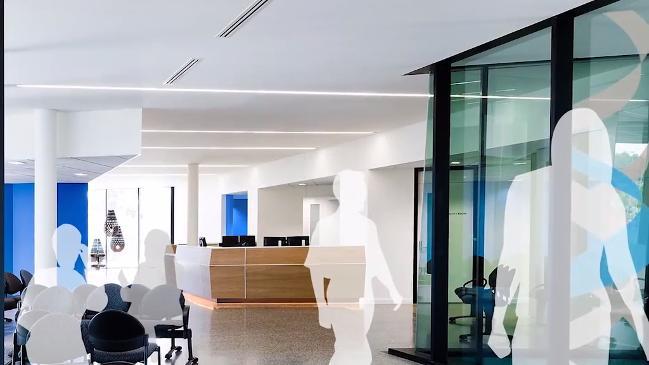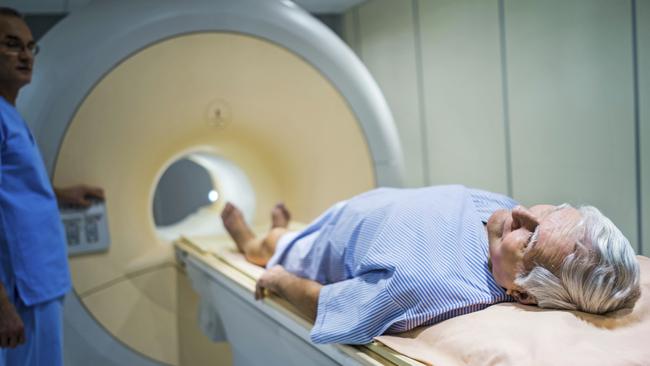Coding errors cause 300,000-plus mismatches in South Australian medical imaging data
MORE than 300,000 medical images such as MRIs and CAT scans have been mislabelled, even mixing up body parts, in major city hospitals.

- Coroner receives findings in chemo bungle scandal
- RAH staff subjected to CAT radiation
- SA Health knew stroke service was a risk
- Analysis: Don’t cure it, prevent it
MORE than 300,000 medical images were wrongly labelled when SA Health moved them to a new computer system, raising the risk of “harm to patients through inaccurate diagnosis”.
The mix-ups include images of wrists being called feet, brains filed as chests and breasts classified as heads.
The Advertiser’s revelation of SA Health’s latest bungle comes amid a billion-dollar, pre-election spending spree on health by the State Government, with Labor MPs making announcements at Flinders Medical Centre, Modbury, Queen Elizabeth and Lyell McEwin hospitals.
Documents obtained by The Advertiser about the medical imaging debacle warn that patients may need more scans if doctors are unable to locate previous scans, with associated risks from radiation for children and women of child-bearing age.
The situation also raises risks where doctors check images for implanted medical devices and for comparisons to check on a patient’s progress, the documents warn.
Children being treated at the Women’s and Children’s Hospital are among those whose scans are affected.
The behind-schedule, over-budget electronic patient record system Enterprise Patient Administration System is being blamed for the massive mix-up, according to the internal documents.
But SA Health insists its new imaging system “is not connected with EPAS”.
The documents show “coding errors” are behind the fiasco where medical imaging such as MRI and CAT scans have been incorrectly labelled as they are shifted from the old Kestral system to the new Enterprise System for Medical Imaging.

The ESMI system’s programs were updated with new codes to align with codes in the troubled EPAS system, SA Health department documents indicate.
However, these new codes caused an avalanche of mismatches when uploading historical medical images to the new system.
The error affects most major hospitals apart from Flinders Medical Centre where management identified the problem last year and notified officials, resulting in an update to ensure a “like with like” result.
The transfer had already been undertaken — with resulting errors — at the Royal Adelaide Hospital, Women’s and Children’s Hospital, Lyell McEwin Hospital and Queen Elizabeth Hospital.
An inquiry by SA Medical Imaging into the problem, which began last September, sought urgent feedback from staff including “negative patient outcomes”.
It noted: “Radiologists may have been accustomed to the discrepancies and adapted their reporting practices but it can make identifying relevant prior studies/procedures time-consuming or error-prone.
“This potentially could result in patients being unnecessarily re-imaged, or affect the quality of the report if the radiologist was unaware or unable to locate prior studies within the system.”
A separate internal memo notes “there is a possible clinical risk” due to the errors.
“The inaccurate imaging historical record introduces a clinical risk as the reporting radiologist relies on the study description being correct to guide accessing previous comparison studies,” it states.
“If the study description is not accurate, a previous study available for comparison is likely not to be accessed.
“This could result in harm to the patient through inaccurate diagnosis and/or unnecessary medical imaging studies.”
It goes on to say that four major hospitals have the errors, “possibly as high as 300,000 mismatches during data transfer”.
Potential solutions flagged by SA Health officials included the low-cost option of educating staff to always double-check for labelling errors, in the hope the issue would be “very low/negligible risk within five years”.
Another option was the expensive one of rematching the historical data with corrected codes, or to see if computer experts can find a “flagging” system so doctors would be alerted to known types of mismatches ‘eg MRI brain for MRI breast’.
The Advertiser submitted questions asking about the number of images affected, how the issue had been addressed and if there had been any reported cases of patient harm.
In response, consultant radiologist Dr Jim Buckley, who is the acting Campus Clinical Head at the Royal Adelaide Hospital, issued a two-sentence statement.
“There was an issue identified with the mislabelling of some files during the 2015 data migration from our old radiology reporting system to the ESMI system,” it states.
“This has not impacted patient care or the ability of clinicians to appropriately treat their patients.”
